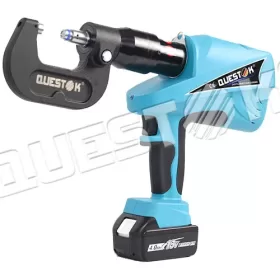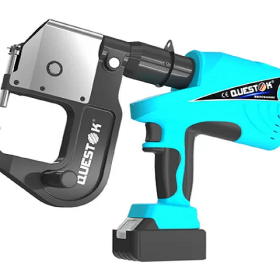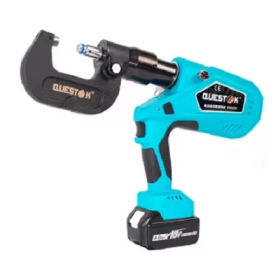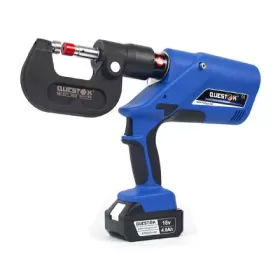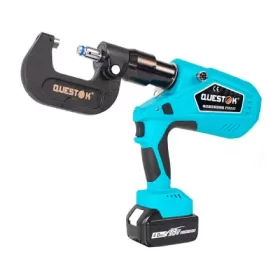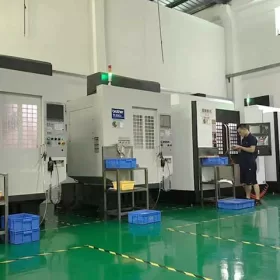Integrating Self-Piercing Riveting into Manufacturing Processes
Self-piercing riveting (SPR) is a joining method that allows for the efficient and reliable assembly of lightweight materials, especially in the automotive and electronics industries. It involves the use of a self-piercing rivet, which is a special type of rivet that creates its own hole in the base material, eliminating the need for predrilling. By integrating SPR into manufacturing processes, manufacturers can achieve numerous benefits, including increased production efficiency, reduced costs, and improved product quality.
Advantages of SPR
SPR offers several advantages over traditional joining methods. Firstly, it eliminates the need for predrilling, saving time and reducing operating costs. Secondly, SPR provides a strong and durable joint that can withstand high loads and vibrations. Thirdly, it is a versatile joining method that can be used on a wide range of materials, including steel, aluminum, and plastics.
SPR Process
The SPR process involves the following steps:
1. Riveting head aligns: The riveting head of the self-piercing rivet is aligned with the joint to be made.
2. Piercing and forming: The riveting head is forced into the base material, piercing it and forming a hole in the process.
3. Anvil backs up: An anvil is positioned on the opposite side of the joint to support the riveting head and prevent the base material from tearing.
4. Stem expands: The stem of the rivet is expanded into the pierced hole, forming a permanent joint.
Applications of SPR
SPR is widely used in the automotive industry for assembling vehicle bodies, frames, and interiors. It is also commonly used in the electronics industry for joining circuit boards and other components. Other applications include:
– Aerospace components
– Appliances
– Furniture
– Medical devices
Design Considerations
When integrating SPR into manufacturing processes, there are several design considerations that must be addressed:
– Material thickness: The thickness of the base materials being joined affects the size and type of self-piercing rivet that should be used.
– Joint geometry: The shape and orientation of the joint will determine the accessibility and feasibility of SPR.
– Load requirements: The type of load that the joint will be subjected to must be considered when selecting the appropriate SPR parameters.
Quality Control
To ensure the quality of SPR joints, it is important to implement proper quality control measures. This includes:
– Visual inspection: Inspecting the joints for any defects, such as cracks or deformation.
– Mechanical testing: Conducting tensile or shear tests to verify the strength of the joints.
– Non-destructive testing: Using techniques such as ultrasonic or radiographic testing to detect any internal flaws.
Conclusion
Integrating self-piercing riveting into manufacturing processes can significantly improve efficiency, reduce costs, and enhance product quality. By understanding the advantages, process, and design considerations of SPR, manufacturers can effectively utilize this versatile joining method to achieve their production goals.
- Company News
- Industry News
- Tag
- Tags
-
The Advantages of Questok Rivet Guns: Precision, Efficiency, and Durability
In industrial fastening applications, the choice of tools directly impacts productivity, safety, and long-term cost-effectiveness. Questok rivet guns have emerged as a standout solution for professionals across aerospace, automotive, and construction sectors. Combining advanced engineering with user-centric design, these tools deliver unmatched performance. Below are the key advantages that make Questok rivet guns a preferred choice:
-
Rivet Gun FAQ
Rivet Gun FAQ-SPR
-
Fast Assembly and Repair With Cordless Solid Rivet Gun
Questok cordless solid rivet gun stands out as a pivotal innovation, merging portability with power to facilitate efficient and effective fastening in a myriad of applications.
-
Redifine The Role of Self-piercing Riveting Gun Machine
Self-piercing riveting adopts high-speed mechanical fastening skill that joins thin sheet materials, typically steel and aluminum alloys.
-
The Latest Innovations in Clinching Tool Design
Explore the latest innovations in clinching tool design, redefining precision, efficiency, and versatility in material joining.
-
The Application and Maintenance of Self-Piercing Rivet Guns
Delve into the applications of self-piercing rivet guns in the automotive and aerospace industries and reveal the essential maintenance practices that ensure their accuracy and efficiency.
-
Rivetless Riveting Gun for Ventilation Duct Projects
The ventilation duct rivetless gun is a tool for riveting ventilation ducts without rivets.
-
Guide to Using Self-Piercing SPR Riveting Gun
In the automotive industry, self-piercing SPR (Self-Piercing Rivet) riveting guns are commonly used for joining metal components in vehicle bodies, including BMW vehicles.
-
Rivet Gun FAQ
Rivet Gun FAQ-SPR
-
Versatile Fastening- Applications of the Handheld Rivet Gun Across Industries
In the realm of fastening, the handheld rivet gun stands as a testament to ingenuity and versatility. Its ability to effortlessly join materials with sheer strength and permanence has revolutionized manufacturing and construction processes, leaving an enduring mark on diverse industries. Aerospace: Where precision and reliability are paramount, the rivet gun shines. In aircraft assembly, […]
-
Time-Saving Tools- Speeding Up Projects with Electric Blind Rivet Guns
In the whirlwind of project deadlines, every minute counts. But what if there was a tool that could dramatically reduce assembly time, giving you an edge in the race against the clock? Enter the electric blind rivet gun: your secret weapon for lightning-fast and effortless riveting. Electric blind rivet guns are the ultimate time-savers for […]
-
Streamlining Fastening- How an Electric Blind Rivet Gun Enhances Efficiency
Introduction In the realm of manufacturing and assembly, fastening plays a crucial role in securing components and ensuring structural integrity. Traditional manual rivet guns, while reliable, are often time-consuming and labor-intensive. The advent of electric blind rivet guns has revolutionized the fastening process, significantly enhancing efficiency and productivity. This article delves into the benefits of […]
-
The Role of Automation in Electric Rivetless Clinching
Electric rivetless clinching (ERC) is a lightweight joining process that eliminates the need for rivets or other fasteners. This can lead to significant cost savings and increased production efficiency. Automation plays a critical role in ERC, enabling high-speed and high-volume production. Automated Feed Systems Automated feed systems are used to accurately position the two workpieces […]
-
Why Choose a Universal Self-Piercing Riveting Gun for Your Projects?
In the realm of construction and fabrication, riveting guns stand as indispensable tools for creating secure and robust connections. Among the various types available, universal self-piercing riveting (SPR) guns have emerged as a game-changer due to their versatility and efficiency. This article will delve into the compelling reasons why choosing a universal self-piercing riveting gun […]
-
Why Choose Stainless Steel Hollow Rivets for Your Projects?
In the world of industrial manufacturing, choosing the right fasteners for your projects is crucial for ensuring longevity and reliability. Among the many options available, stainless steel hollow rivets stand out as a superior choice for a wide range of applications. This article delves into the compelling reasons why stainless steel hollow rivets are the […]
-
Top Trends in Electric Rivetless Clinching Guns
In the realm of fastening technology, electric rivetless clinching guns have emerged as a revolutionary solution for a wide range of industrial applications. These advanced tools offer several преимущества and capabilities, revolutionizing the way businesses approach their fastening needs. Adoption of Brushless Motors Brushless motors have gained significant traction in electric rivetless clinching guns due […]

